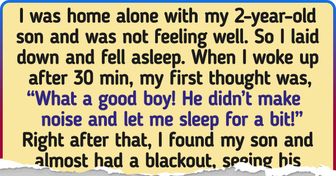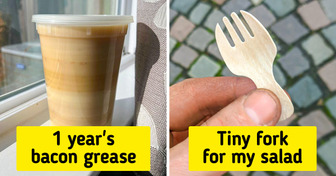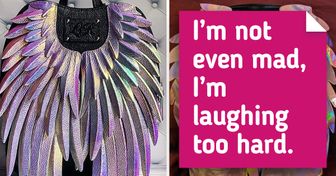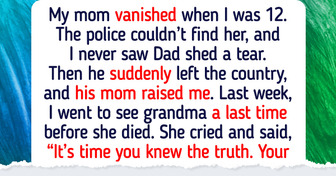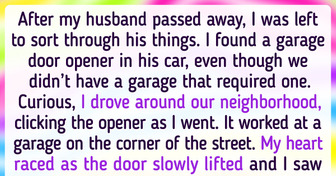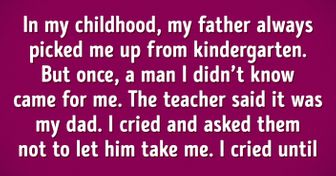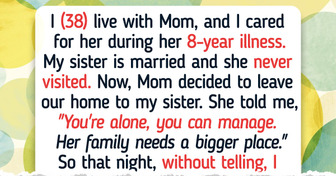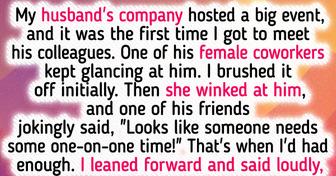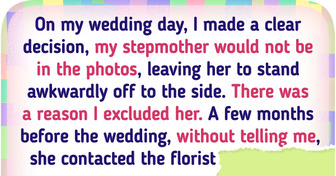18 Stories That Show Treating Others With Kindness Is Always the Best Decision

When watching a fashion show, we might end up feeling confused rather than captivated because of the intricate, unwearable clothes or the frowns on the model’s faces. But a fashion show is more like an art exhibition —we may not understand it at first glance, but when we learn to contemplate the artist’s vision, we end up loving it.
It may sound unfriendly to say that a serious face is much more elegant than a smiling one, but for the fashion industry, it is. According to some professionals, this is because the model’s face should not overshadow the garment: “They want to show the clothes and not our faces. If we smile, we focus attention on our faces and not the clothes.”
Moreover, although in a clothing store, we appreciate the friendliness of the employees, the big brands, which want to create social distance to show status, prefer to hire salespeople with neutral faces.
But this is not just the companies’ idea. A study combined neutral faces with luxury goods to assess whether the interaction between the facial expressions of salespeople and the type of product affected its valuations. The results showed that neutral facial expressions increased the perceived social distance, thus further enhancing the valuation of the product.
Although we’re used to seeing long faces on the runway, models did smile on fashion shows decades ago. According to professionals, the vogue for expressionless faces is relatively recent. Before the 1960s, beautiful women paraded the catwalks with smiles on their faces until the arrival of models like Brigitte Bardot and Jane Birkin.
Thinking that runway models are the type of beauty that every woman aspires to is somewhat outdated. Those who work in the industry say that designers “want the most neutral faces and bodies possible to show their work. They do not see their models as an ideal of beauty any longer.”
In addition to showing all face types, fashion has integrated new standards of skin tones and sizes that we as a society can finally identify with. In fact, according to one study, plus-size models are having an increasing impact on social media.
Models who work in agencies usually travel to other countries for months or years to get new opportunities to grow professionally. So they tend to live in shared apartments with other models. However, these places are not as cool as the ones seen on America’s Next Top Model; in fact, they are much less glamorous.
Some may even be infested with bugs, and the models have to sleep on uncomfortable bunk beds or couches. Still, the agencies don’t lend them the place; they must pay for rent, which will be deducted from their paycheck.
Just as we wouldn’t wear a black bra under a white shirt, models must be careful that the underwear does not ruin their chances during casting.
The solution is to wear nude-colored underwear, which adapts to all types of garments. They also take special care that the bra is neither too tight nor too loose, as it must fit their body perfectly. Apparently, no matter how beautiful they are, it is not enough to put on a pretty dress and go out and conquer the fashion industry. It just doesn’t work that way.

When attending castings, models may get asked to share their social networks. And this is not to see their posts, but to check the number of followers. The more they have, the more chances to be selected. Therefore, they should be popular on social networks, aspiring to be not only models but some sort of influencers as well.
Most women have an anecdote of a time they got their period in the worst-case scenario, either while wearing white pants or in the middle of a vacation. Anyway, it’s not a pleasant experience, yet there is always a solution.
In the case of a model, if she gets her period the day she has to go on the catwalk or do a photo shoot, she can’t skip wearing tight-fitted gowns or swimsuits. Instead, models need to wear tampons and pay special attention, so the string does not pop out.
Their shoes may look great, but wearing them, not so much. People in charge of wardrobe don’t give a second thought to how shoes fit, so models may end up with shoes that are either too big or too small. To wear them, they may need some ingenuity, like wrapping them in tape to prevent them from falling off if they’re too big or getting them to fit if they’re too small:
Walking on the runway is more like dancing rather than actually walking. It requires a rhythm and elegance that take practice. Plus, when uncomfortable shoes or a tight outfit are involved, models have to work hard to make it look natural. That’s why even the most renowned models must practice not just walking on the floor, but also on a treadmill wearing heels.
While watching a fashion show, we might have wondered: “Who on earth would wear something like that out in the street?” But, in reality, these garments were not made to be sold in stores. For designers, fashion is not just “pretty,” fashion is art. So, when you see a fashion show with clothes that no one would wear, you know that what you’re seeing is actually an art exhibition.
There are also prêt-à-porter fashion shows, which are purely commercial. The clothes are sold in stores and tell us what the next trends will be.
Do you prefer happy-looking models? Or do you believe expressionless faces sell clothes better?

